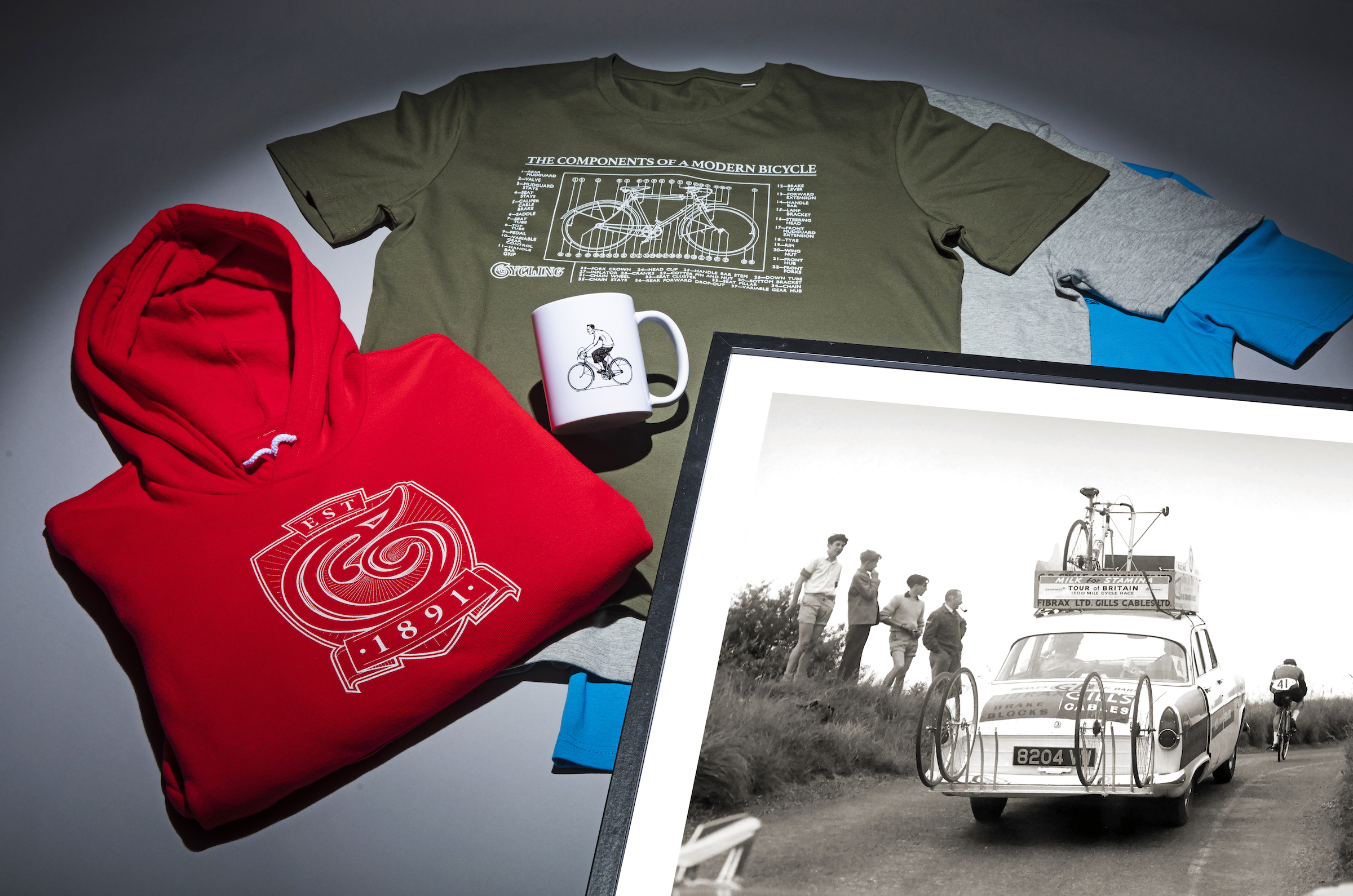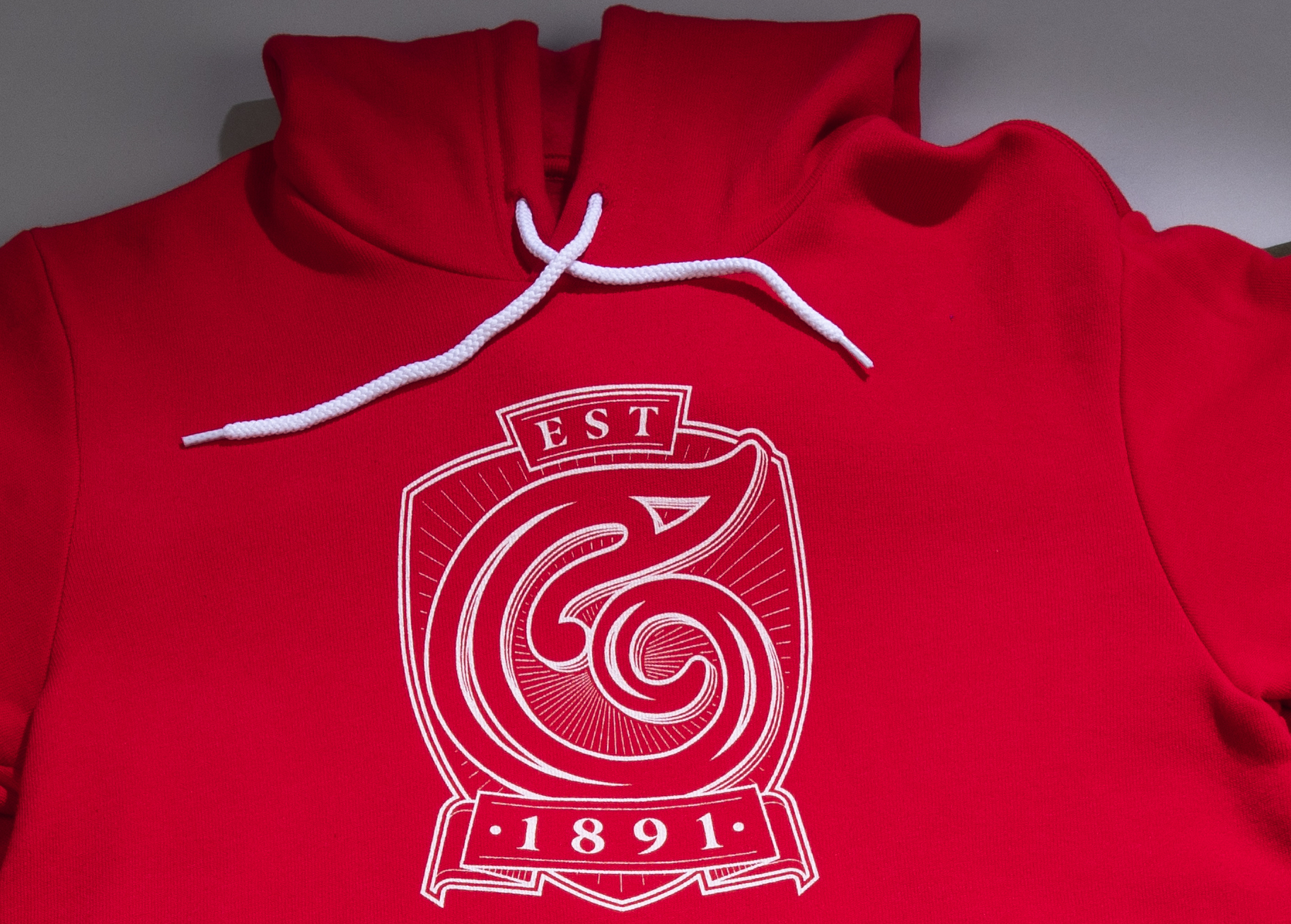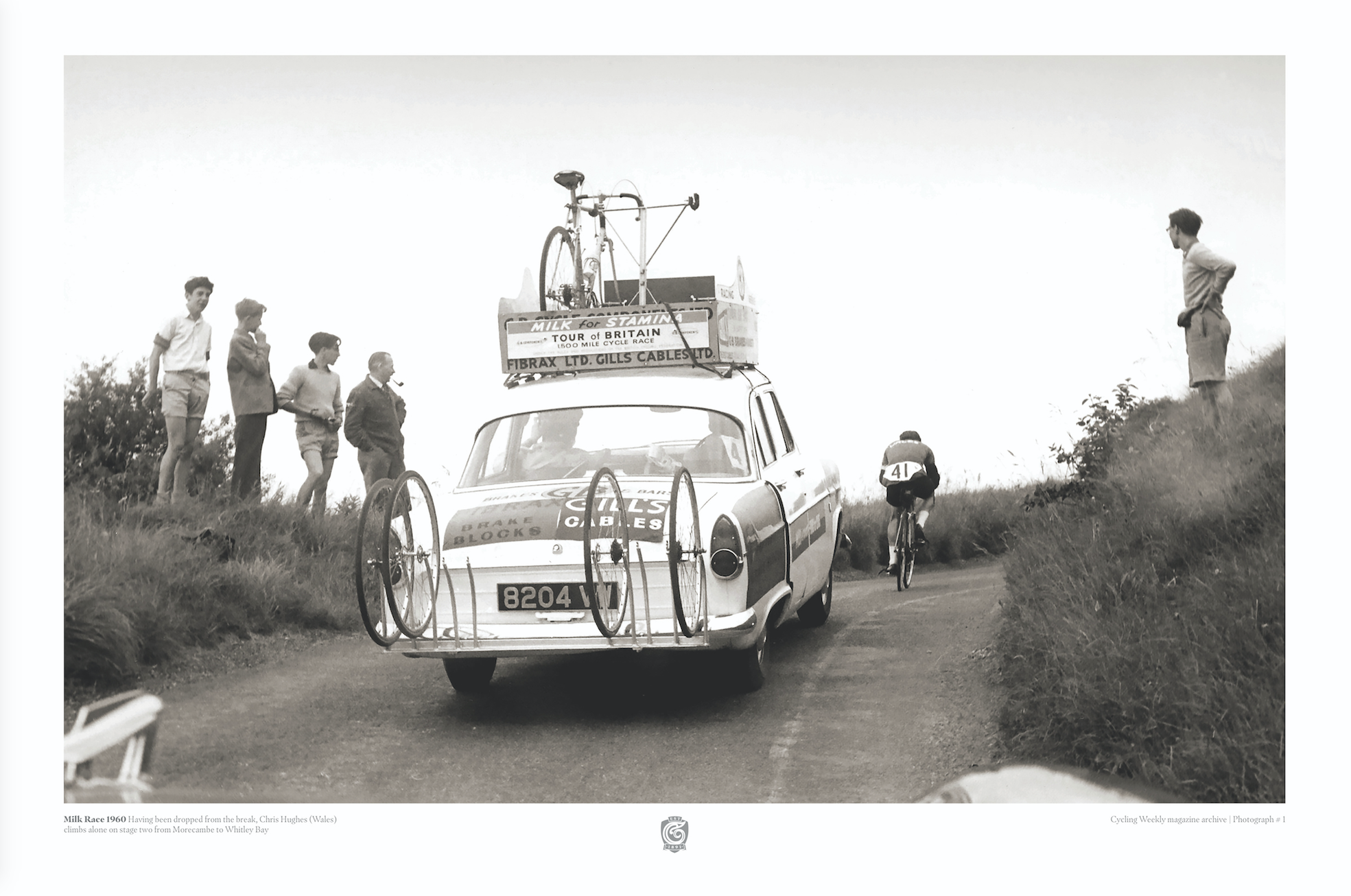
Cycling Weekly magazine has been a part of the British cycling scene for over 130 years. Originally known as Cycling, for a while Cycling and Mopeds and then Cycling Weekly from the mid 1980s, the publication is the oldest cycling magazine in in the world and the sport's only weekly print title.
Throughout that period we have amassed a huge archive of images, illustrations and stories, some of which we've brought to life with our heritage range of clothing, mugs and t-shirts.
From the intricately designed C of Cycling that was part of the magazine's first masthead to black and white images from old bike races, it's a unique collection that you can now own a part of.

The 'C' has become the logo for our heritage range. Updated from the original 1891 Cycling masthead – which remained largely unchanged for five decades – and placed on a shield, a nod to the head badges that have graced the head tubes of steel bicycle frames for decades.
The prints on the clothing are all versions of illustrations that featured in the magazine and its associated annuals over the years. The bicycle that features on our best selling 'components of a modern bicycle' T-shirt may not be modern today, but it certainly was back in the 1940s when first published.
Meanwhile the exercises were first published in the ‘Scientific Training for Cycling’ manual. Many of these have been hidden away in cupboards and drawers in the Cycling Weekly offices and won't have been seen since they were first published. And some of them aren't too dissimilar to the exercises you'll see people doing on Instagram.
These illustrations, designed by a Dr Christopher Woodward who was described as "the athletic specialist who advises readers of Cycling on their health, training and diet problems," often came with very serious advice.
Readers were warned about the Woodward Code as "not being some secret way of finding fitness. The very opposite is the case. Dr Woodward offers the hard way only."
All items are printed to order with the T-shirts made from organic, vegan friendly materials. Go to merchandise store to order.

Our heritage range also includes black and white posters, including the one above from the 1960 Milk Race. This image was first printed in the magazine as part of our From the Archives pages but came with little information.
Due to late changes in the line up of the Welsh team that year, there was no way of telling who this rider was. But, within just days of the magazine going on sale an email dropped into our inbox from the rider captured struggling up this hill. You can read the full story behind this picture here.
The first issue of Cycling
It might be the elder statesman of cycling magazines, a constant throughout more than a century of two-wheeled progress and a reassuring presence in the lives of five generations of cyclists, but it was a group of anti-establishment, angry young men that created Cycling.
Its founder, Edmund Dangerfield, was just 26 when Cycling was launched in January 1891. His editor, Charles Sisley, was 23. Walter Groves, the assistant editor, was 24 and Ernest Perman, who looked after the business side, was 23.
They were all young, but they had more than their youth in common: they belonged to the first generation of cyclists to have embraced the diamond-framed, chain-driven Safety bicycle, which had arrived six years earlier. They had become increasingly frustrated that not only was there still no magazine for the new type of cycling, but the publishers of the era had no intention whatsoever of creating one.
There may have been one other, more personal reason why Dangerfield, who ran a printing company off Fleet Street with his three brothers, had approached his new Safety bicycle-orientated publishing venture with such zeal: he had short legs.
Ernest Perman wrote: “It was the advent of the Safety bicycle in 1885 that enabled Edmund Dangerfield to reach the front rank of road riders. He was a good-looking young man, very dark with remarkably fine eyes and an ivory skin. He was strong and sturdy, but his legs were a little shorter than normal, and when he changed from a small direct-drive Ordinary to a geared-up Safety there was a big difference in his speed. The wonderful alteration in the design of the bicycle just suited him.”
In 1890, the year before he launched Cycling, Dangerfield won the first ever Bath Road 100 in 6-38-54. He completed a classic double later that season when he won the North Road 100.
Issue number one of Cycling was dated January 24, 1891. There were 20 pages of editorial printed on pink-tinted paper. It had a blue cover with a ‘presentation plate’ depicting FJ Osmond, the track champion of 1890, by George Moore, a cycling friend of Dangerfield’s who was normally employed by the Dangerfield Printing Company to draw coloured lithographic posters for bicycle manufacturers’ advertising.
It was priced at one penny. It was timed for the opening of the Stanley cycle show at the Crystal Palace, and a report of the exhibits was published in the second edition.
Every copy that could be produced was snapped up – a total of 20,000.







